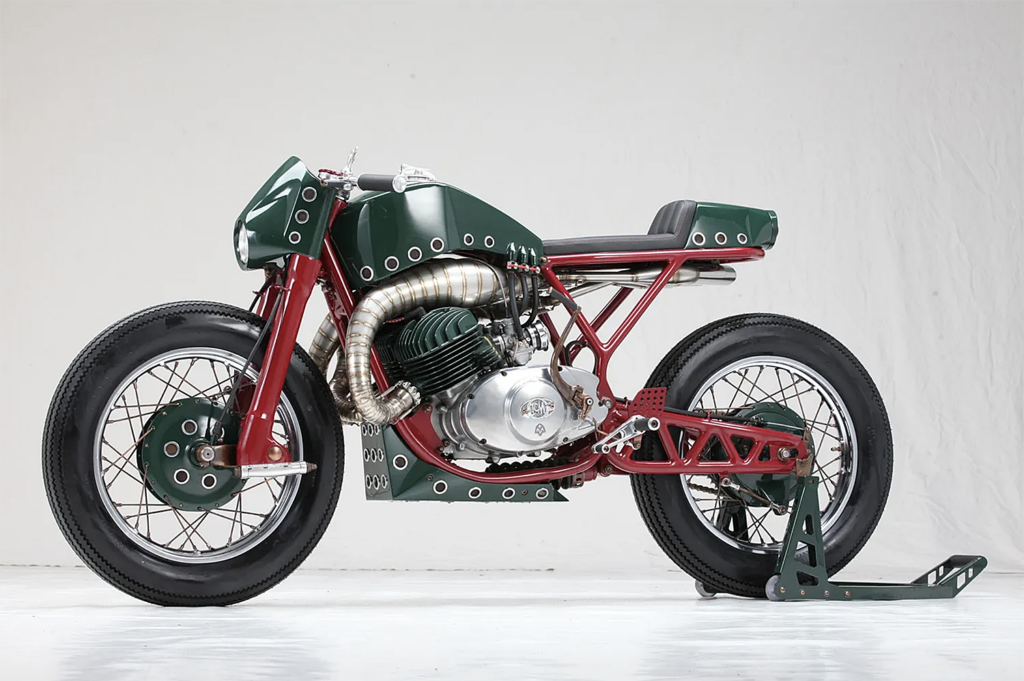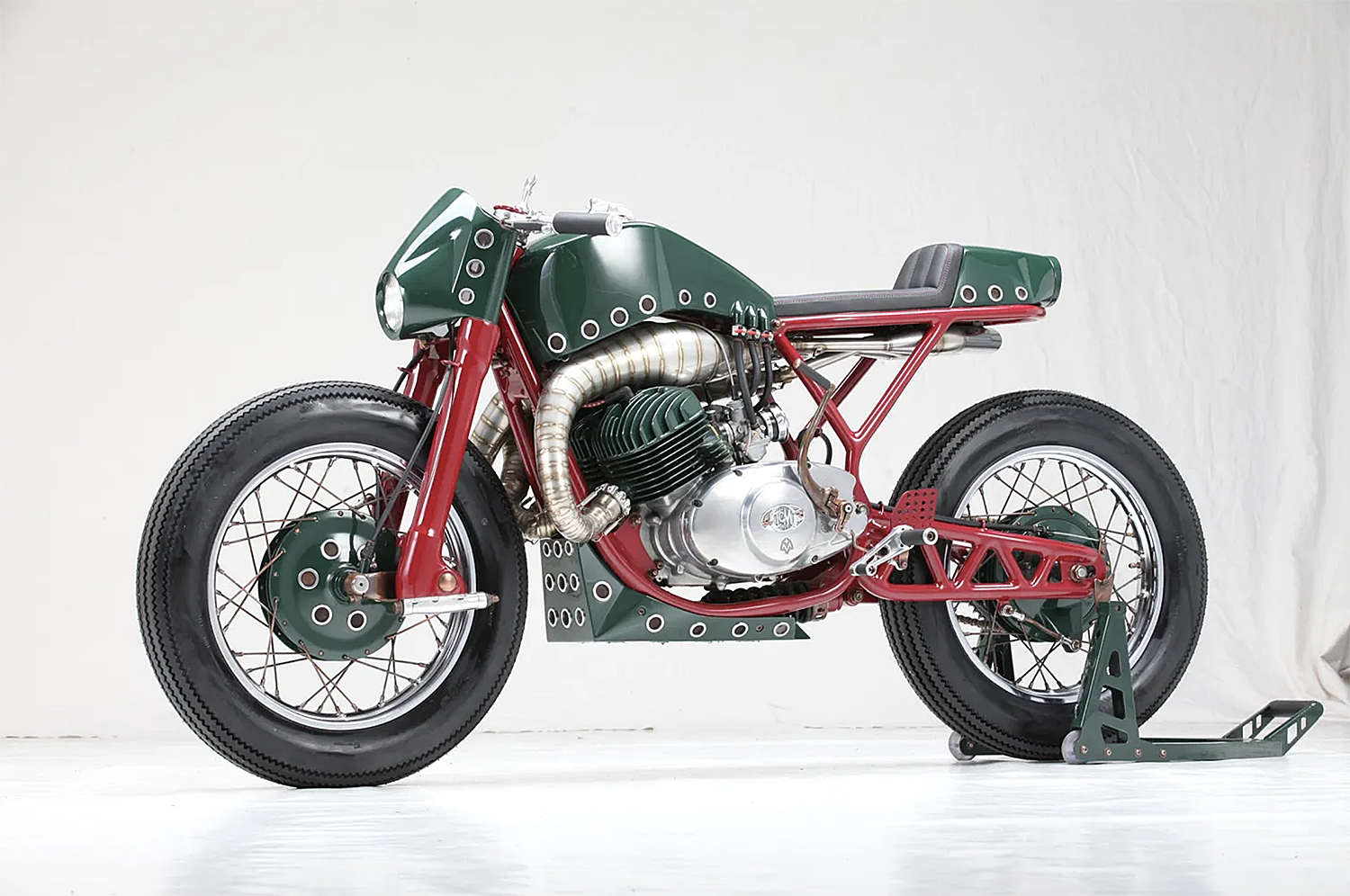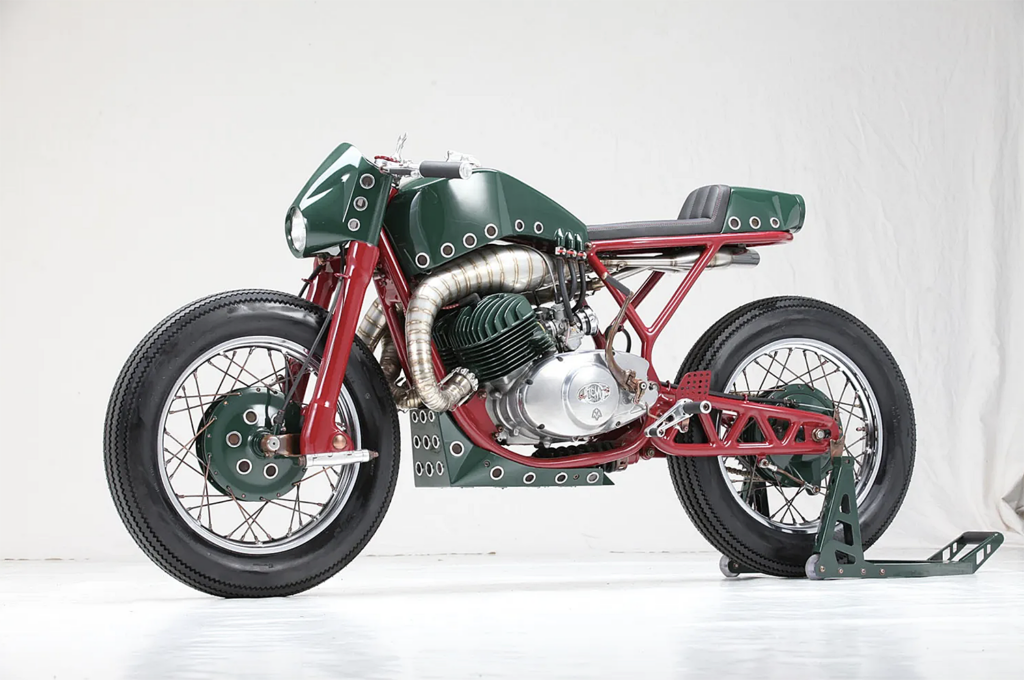
Until the Berlin Wall came down in 1989, what went on behind the Iron Curtain was largely unknown to the average person, the Cold War after all was as much about propaganda as it was anything else. So, just as talented engineers plied their trade in the UK, Japan and the US to build some of the greatest motorcycles in living history, a similar group in Eastern Europe was rarely known about and remains largely forgotten. This motorcycle is a tribute to one such man, Wilhelm Beckmann and crafted by Ukraine’s Iron Custom Motors. But don’t think this machine is a collection of old parts, almost everything, including the incredible engine was built in-house by Yaroslav Lutitskyi and his team, to create a Soviet-style smoker like no other!
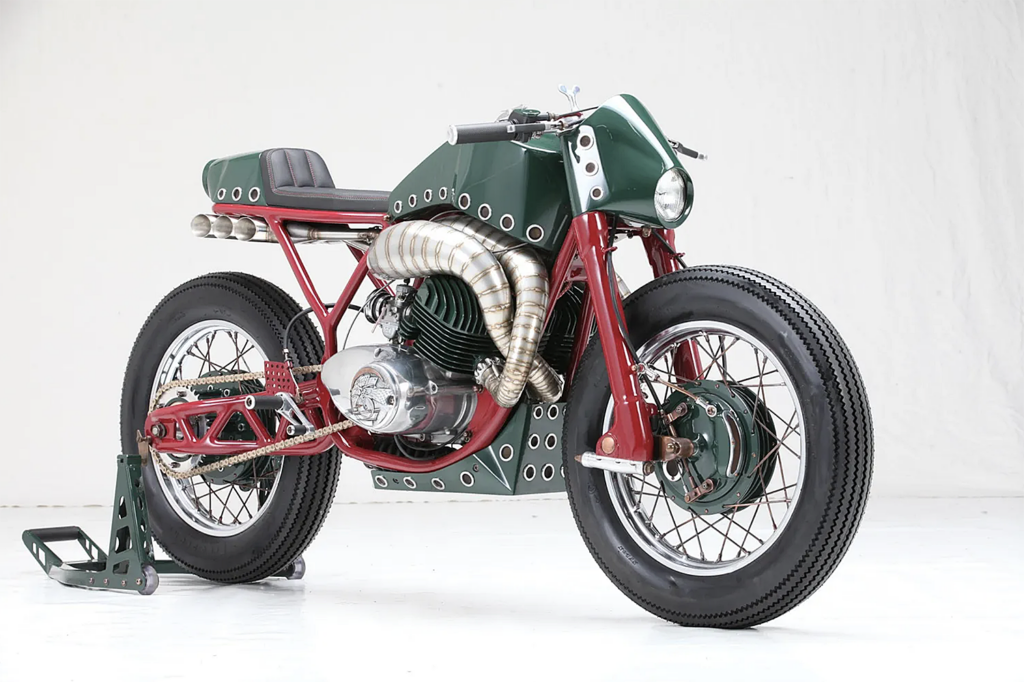
For every J.A. Prestwich and George Brough, Soichiro Honda and William S Harley, there were equally passionate men in Eastern Europe doing incredible things with and on two wheels. Lost in the fog of war is the fact that most of them simply wanted to keep building the bikes they love, and racing them for ultimate glory. Of course, racing has its own share of politics and crossing the Iron Curtain, East Germany’s Ernst Degner defected in 1961 with MZ’s two-stroke tuning secrets, sold them to Suzuki and together won the world title the following year.
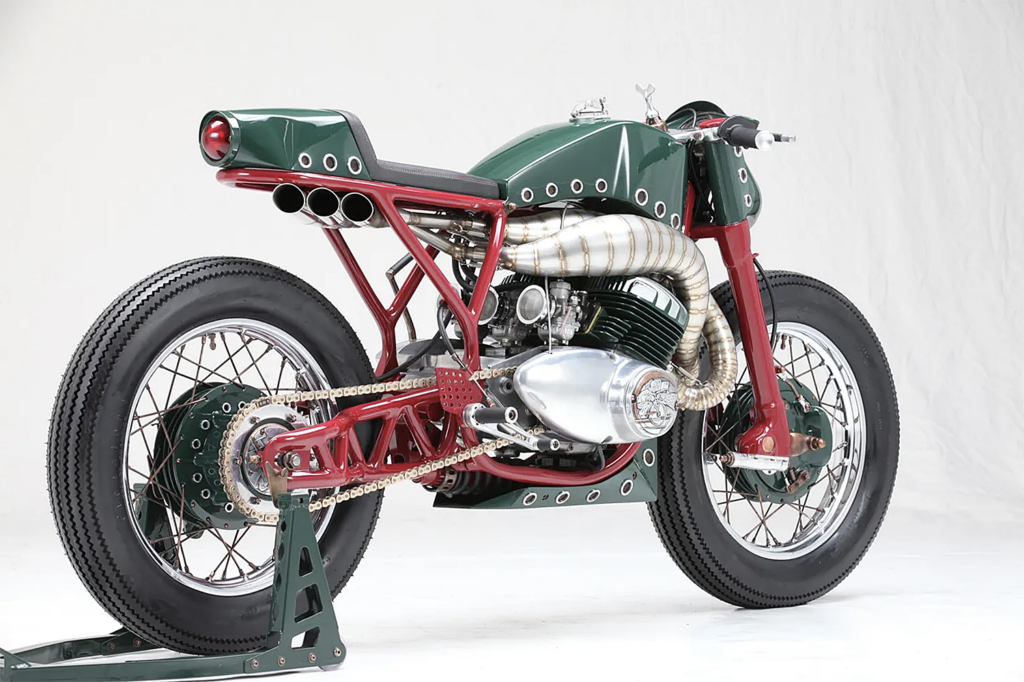
Beckmann however was from an earlier time, an engineer, athlete and motorsport fanatic, he built a true sportbike in the ’30s and won many a prestigious race on his own incredible machinery. To honour that ingenuity, Yaroslav Lutitskyi and the Iron Customs crew wanted to do something truly special, and the outfit is no stranger to the two-stoke game, with many a strong appearance at the AMD World Championships with their crazy contraptions powered by oil-burning engines. At the heart of this project then is not what many people have mistaken for a Suzuki or Kwaka engine, but a true hand-built Frankenstein.
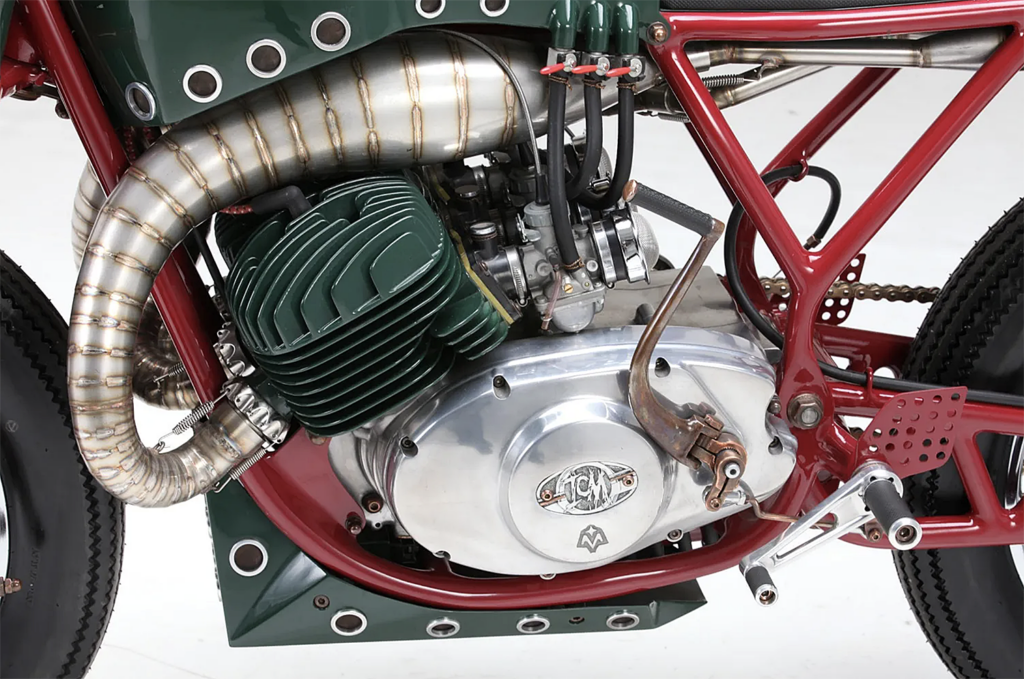
Starting with a pair of 1982 IZH Jupiter 4 engines, another Eastern Bloc special, the guys took those 350cc twin-cylinder engines and cut them up to have four individual cylinders. From here they could make their own triple and meticulously worked out all of the details of joining two end cases from both left and right, and then creating a centre chamber. They also had to make a new crankshaft, and like many old-school items, it is a combination of three separate sections that press fit together and now sit on some chunky journals to aid reliability. The rest of the internals are largely IZH, with an SH-12 four-speed serving as the cog swapper and utilising a custom clutch.
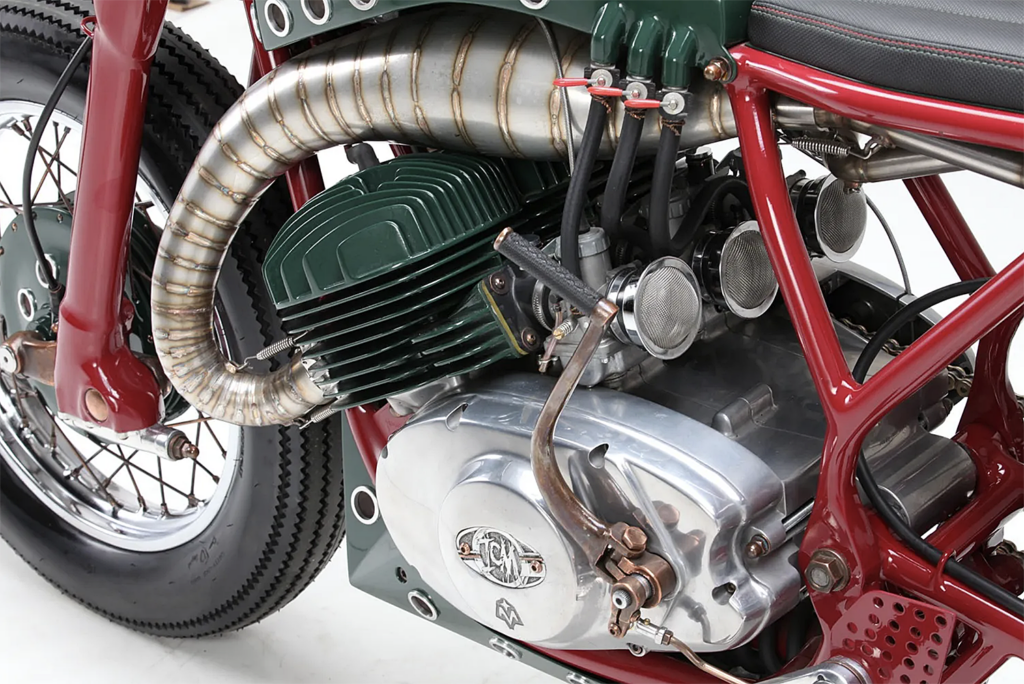
The packaging of the custom engine sure does make it look factory, but the fuelling comes from the West, with three Mikuni’s chosen and given a full set of custom-turned velocity stacks. The exhaust is another handmade work of art, snaking over the top of the motor, the triple expansion chambers come together under the seat, before spitting out of three side exit pipes which produce a hell of a sound. The final capacity of the screamer is a neat 555cc and it produces a very healthy 56hp @ 7,500rpm, with a much broader spread of torque than anything made by an IZH engine and with 1,500rpm extra rpm.
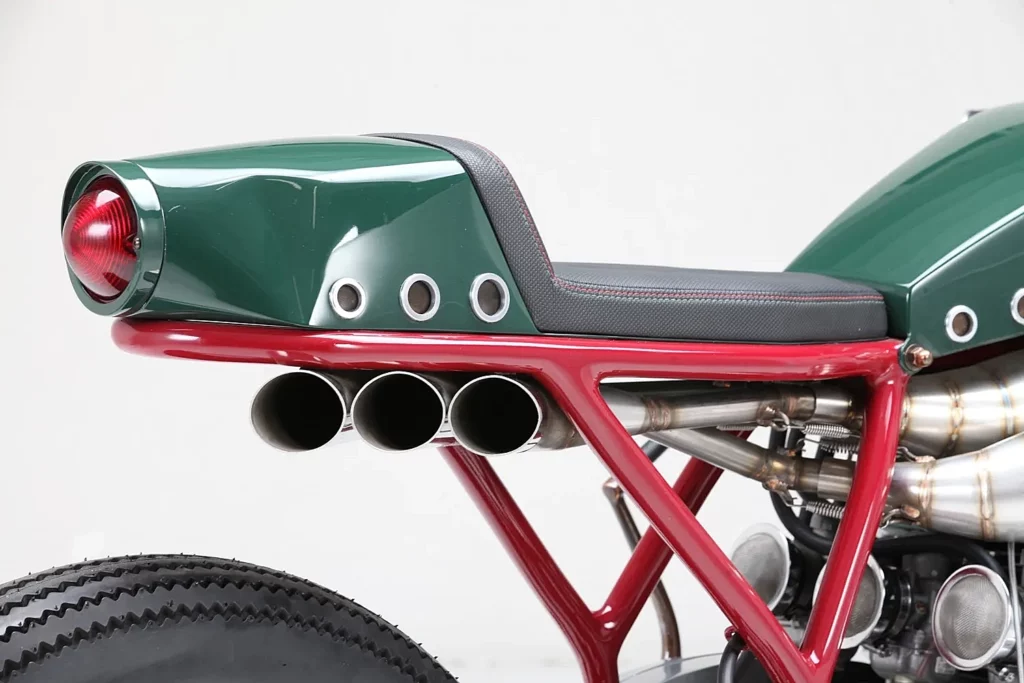
To package this special powerplant in a nice frame, Iron Customs went for a more well-known manufacturer from the Eastern Bloc. But the Jawa 350 still only provides the headstock and a small fraction of the remainder of the steel, with the vast bulk of the chassis being made in-house. This includes the work required to produce the laydown, under the engine, mono-shock configuration, as well as the truly stunning swingarm to go along with it. The lower cradle is also customised to support the new engine configuration, and the subframe stuns in its simplicity.
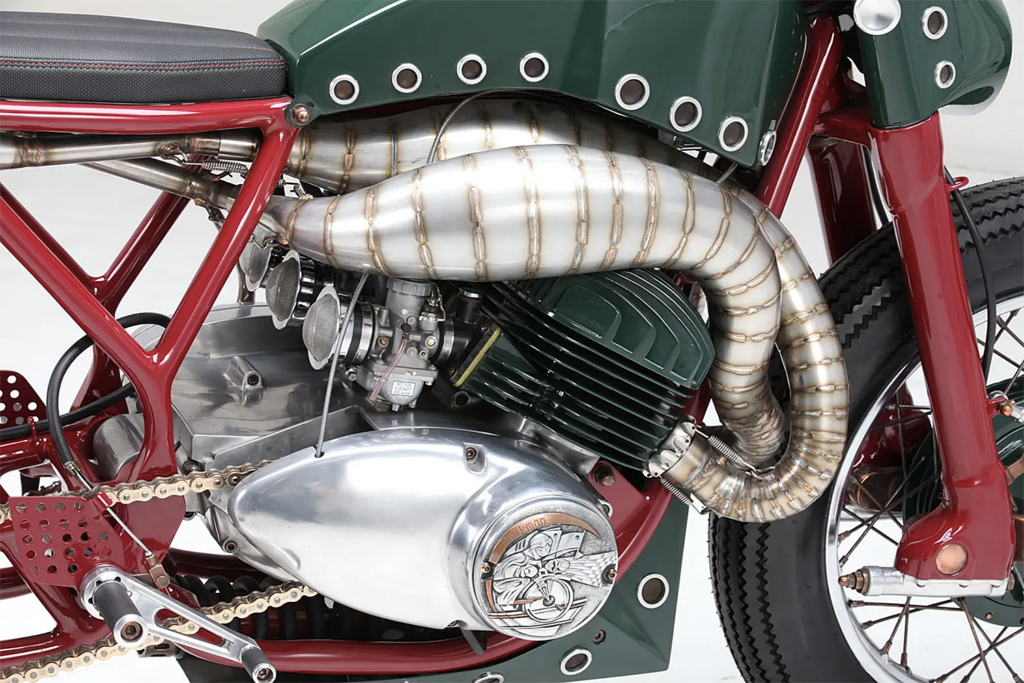
But having made their own rear, the front needed to bring more of that history back to the party and very few items are as distinctive as the Dnepr K750 fork setup. The leading link design is almost a less sophisticated version of that used on a Ural, and then it’s more parts from over East, with a highly sought after air-cooled drum brake taken from an IZ SH 12 racing motorcycle. And it was this piece that heavily inspired the aluminium bodywork, with the three distinct cooling holes replicated across the hand-built panels. The front cowl gives the motorcycle a unique appearance, instantly leaving you to scratch your head wondering what the hell is this thing.
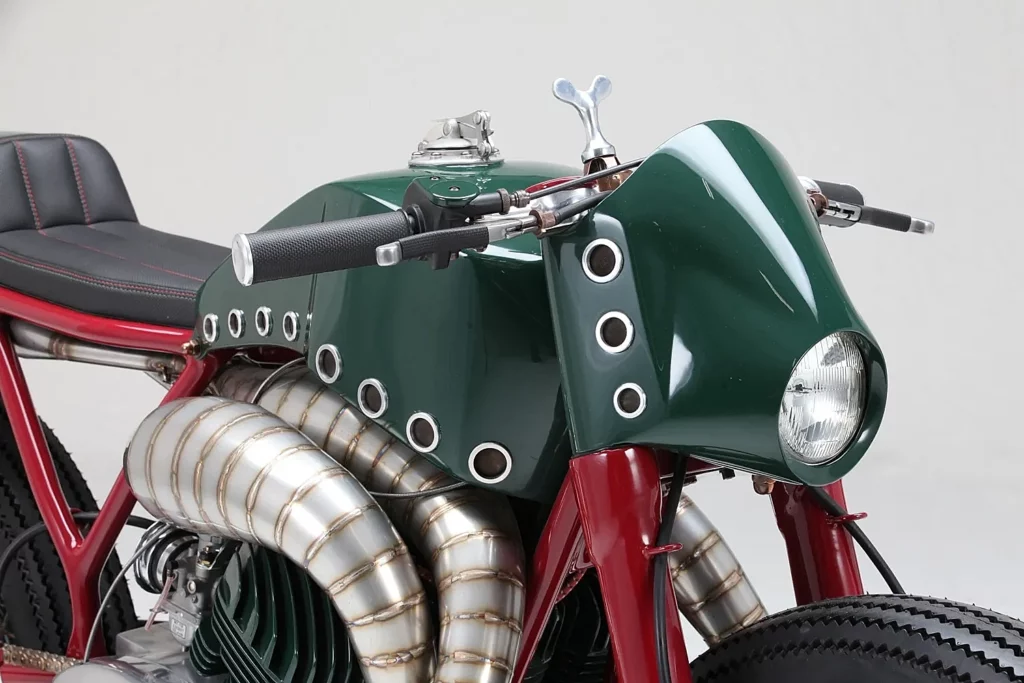
Then the fuel tank takes that a step further, the shape dictated by the need to accommodate that stunning exhaust, before narrowing continuously as the lines approach the rider’s legs. There is a belly pan to add to the drama and then the tail piece with its vintage light, helps to give the bike an utterly ambiguous time stamp. The detail work on the side covers, the filler cap and so many other handmade pieces do the same, deliberately making this motorcycle impossible to date, let alone identify.
And that is the true mastery behind the bike called “Beckmann”, it pays homage to a unique man in motorcycle history and does it in a way that takes the best of the East and allows the rest of the world to appreciate men and their machines, walled off from us for many tragic decades.
